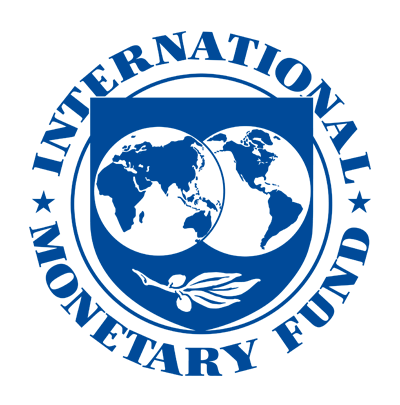QUESTIONS FROM THE FLOOR
Q: (Scott Mitchell-Malm – The Race) To all three. Jonathan mentioned the issues in FP1. Just wanted to know how big a deal it was for your three teams. What were you missing? Was it just GPS? Was it more? And for Ayo…

QUESTIONS FROM THE FLOOR
Q: (Scott Mitchell-Malm – The Race) To all three. Jonathan mentioned the issues in FP1. Just wanted to know how big a deal it was for your three teams. What were you missing? Was it just GPS? Was it more? And for Ayo…

Red Bull driver Max Verstappen set the pace during second practice at the Mexico City Grand Prix, the Dutchman leading the way from the Ferrari of Charles Leclerc and Mercedes’ Kimi Antonelli.
After a total of nine rookies were given an outing…

This paper explores how central bank digital currencies (CBDCs) could enhance the delivery of social safety nets (SSNs). It assesses CBDC design features and their implications for payment administration and delivery. Findings suggest that using CBDCs solely as payment delivery solutions offers limited advantages over existing systems such as faster payment systems. However, leveraging CBDCs as payment administration platforms—with peer-to-peer transfers, decentralized ledger access, and advanced programmability—could transform SSN delivery by enabling agencies to automate transfers, operate independently from private financial intermediaries, and monitor transactions directly. These benefits come with significant challenges, including privacy concerns, compliance risks, and infrastructure requirements. The paper emphasizes that realizing CBDCs’ full potential for SSNs will depend on thoughtful integration with existing systems and a clear understanding of their comparative advantages. Aimed at social protection policymakers and finance specialists, it highlights the need for collaboration between CBDC developers and SSN administrators to ensure that digital currencies effectively support inclusive and efficient benefit delivery.
Subject:
Blockchain and DLT,
Central Bank digital currencies,
Smart contracts,
Technology
Keywords:
Blockchain and DLT,
Central Bank digital currencies,
Central Bank Digital Currencies,
Financial Inclusion,
Fintech,
Government Transfers,
Payment Systems,
Smart contracts,
Social Safety Nets

WSFS Financial (WSFS) posted earnings growth of 5.9% over the past year, moderating from its five-year annual average of 10%. Net profit margins edged up to 27.6% from last year’s 27.1%. The share price of $53.02 remains well below the estimated fair value of $113.94, and the company’s P/E ratio of 10.6x sits lower than peer and industry averages. With revenue and earnings projected to grow slower than the broader US market, the focus is on WSFS’s disciplined valuation and consistently healthy profits. This gives value-oriented investors reasons to stay interested even as growth prospects appear more subdued.
See our full analysis for WSFS Financial.
Next, we’ll put the results head-to-head with the market’s dominant narratives and see where the numbers back up or buck prevailing sentiment.
See what the community is saying about WSFS Financial
Net profit margins improved to 27.6% this year, a modest increase from last year’s 27.1%, even as earnings growth slowed to 5.9% compared to the five-year annual average of 10%.
Analysts’ consensus view highlights management’s focus on digital modernization and operational efficiency as key factors helping to counter softer revenue growth.
Recent enhancements in online and mobile platforms are expected to help reduce costs, support efficiency, and maintain competitive customer experiences.
Stable margins set WSFS apart when compared to peers facing similar growth constraints, which could lift relative valuation over time.
To see how WSFS’s margin story fits into broader market expectations, read the consensus case for context. 📊 Read the full WSFS Financial Consensus Narrative.
Non-interest income sources such as wealth management and trust services are bolstering revenue diversity, and analysts anticipate a 4.97% annual decline in shares outstanding due to continued aggressive buybacks.
According to the consensus narrative, investors value WSFS’s strategic emphasis on building stable, fee-based income and pursuing opportunistic M&A.
Greater non-interest income can provide a cushion against rate-related margin pressure in the traditional lending business.
Declining share count could amplify earnings per share, offering a buffer during periods of modest organic growth.
Shares trade at $53.02 with a price-to-earnings ratio of 10.6x, notably below the bank industry’s 11.2x average and both the DCF fair value estimate of $113.94 and analyst target of $63.5.
The consensus narrative points out that WSFS’s disciplined valuation, combined with its high-quality earnings, could present value-oriented investors with upside if the firm executes on its digital and non-interest income strategies.
Peer and industry discount suggests the market doubts the company can return to faster growth or that risks remain underappreciated.
However, stable profit margins and capital discipline improve the chances that WSFS can deliver attractive returns even if growth lags the broader market.

This paper evaluates three approaches to address parameter proliferation issue in nowcasting: (i) variable selection using adjusted stepwise autoregressive integrated moving average with exogenous variables (AS-ARIMAX); (ii) regularization in machine learning (ML); and (iii) dimensionality reduction via principal component analysis (PCA). Utilizing 166 variables, we estimate our models from 2007Q2 to 2019Q4 using rolling-window regression, while applying these three approaches. We then conduct a pseudo out-of-sample performance comparison of various nowcasting models—including Bridge, MIDAS, U-MIDAS, dynamic factor model (DFM), and machine learning techniques including Ridge Regression, LASSO, and Elastic Net to predict China’s annualized real GDP growth rate from 2020Q1 to 2023Q1. Our findings suggest that the LASSO method outperform all other models, but only when guided by economic judgment and sign restrictions in variable selection. Notably, simpler models like Bridge with AS-ARIMAX variable selection yield reliable estimates nearly comparable to those from LASSO, underscoring the importance of effective variable selection in capturing strong signals.

This paper presents the Mauritius Quarterly Projection Model (QPM), the semi-structural analytical tool that underpins the modernized Forecasting and Policy Analysis System of the Bank of Mauritius (BOM). The model is designed to capture the salient features of the domestic economy, including key monetary policy transmission channels and the recently introduced flexible inflation targeting framework. Relative to canonical QPM structures, it also incorporates a parsimonious fiscal block and a labor market block, providing key insights on broader macroeconomic dynamics and enriching the policy advice. The model optimally balances theoretical consistency—evident in coherent shock propagation and policy responses—and empirical reliability, as reflected in its strong in-sample forecasting performance. The practical use of the Mauritius QPM in the context of the BOM’s regular forecasting cycles for the production of baseline projections, counterfactual simulations and alternative scenarios, together with the corresponding model-based economic narratives, make it a critical component of the BOM’s forward-looking monetary policy formulation.
Subject:
Exchange rates,
Foreign exchange,
Inflation,
Labor,
Labor markets,
Output gap,
Prices,
Production,
Real effective exchange rates,
Real wages,
Wages
Keywords:
Exchange rates,
Forecasting and Policy Analysis,
Global,
Inflation,
Labor markets,
Mauritius,
Monetary Policy,
Output gap,
Quarterly Projection Model,
Real effective exchange rates,
Real wages,
Transmission Mechanism,
Wages

Hoist Finance (OM:HOFI) reported a net profit margin of 20.2%, slightly ahead of last year’s 20%, and posted EPS growth of 13.2% over the past year. Over the past five years, the company has averaged an impressive 61.1% annual earnings growth rate, although the most recent year came in a bit lower. With earnings forecast to climb 15.01% annually and revenue projected to rise 11.8% per year, both of which are well above the Swedish market’s outlook of 3.9%, investors will be watching for these performance trends to continue. The stock currently trades at a P/E of 9.6x, putting it below industry and peer averages. Risks around dividend sustainability and financial position are noted but do not outweigh the company’s attraction as a value and growth story.
See our full analysis for Hoist Finance.
The next section puts these results head-to-head with the most widely followed narratives for Hoist Finance, weighing where the facts and stories align or where some assumptions may need rethinking.
See what the community is saying about Hoist Finance
Analysts project an increase in profit margin from the current 20.2% to 25.0% over the next three years, setting a higher earnings quality bar for Hoist Finance.
According to the analysts’ consensus view, several levers are driving this anticipated uplift in profitability:
Efficiency gains and new deposit platforms are expected to lower funding costs, supporting wider margins even if portfolio supply remains patchy.
However, climbing funding costs—already up from 3.4% to 4.4% of portfolio value—may pressure these targets if interest rates rise or if new cost controls stall.
For a balanced reading of how bulls and bears are debating Hoist’s pathway to higher margins, see the full Consensus Narrative. 📊 Read the full Hoist Finance Consensus Narrative.
Hoist is aiming to expand its acquired loan portfolio to SEK 36 billion by 2026, with this figure anchored by a robust pipeline and recent demographic trends boosting non-performing loan volumes across Europe.
Analysts’ consensus view sees greater supply of non-performing loans (NPLs) and regulatory harmonisation opening new opportunities:
As EU-wide rules ease access to unsecured portfolios, recurring revenue and scale should strengthen Hoist’s competitive position over the medium term.
Nonetheless, temporary regulatory constraints and limited supply of high-yield NPLs in key markets may slow progress, making portfolio growth partly reliant on market timing and successful geographic expansion.

Geeta PandeyBBC News, Delhi
 JioStar
JioStarA crossover no-one saw coming.
That’s how many in India are describing Microsoft founder and philanthropist…

Summary:
Knowles has launched the MM60 MEMS microphone at EUHA 2025, engineered with a new MEMS motor and advanced ASIC to optimize AI chipset performance in hearing aids through enhanced durability, programmability, and acoustic…

If you’re new to Starlink, don’t be surprised if you get a notice warning you about your copyright infringement, regardless of whether you’ve downloaded copyrighted material or not.
These types of notices aren’t unique to Starlink, but…